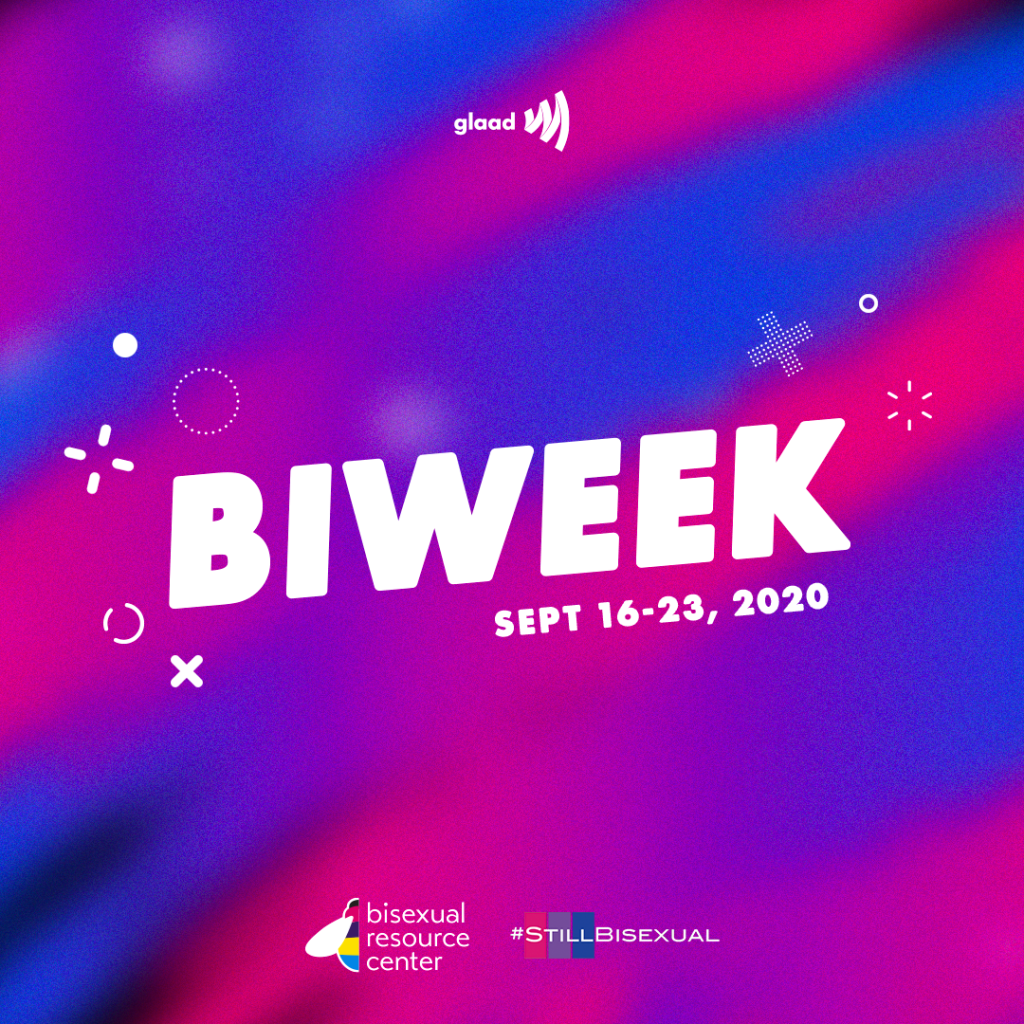On Bisexual Visibility Day, we not only applaud the visibility of out bisexual+ people, but we call attention to the misinformation about bisexual+ people that too often exists in the media and within the broader LGBTQ community.
In January of 2019, pioneering bisexual+ advocate Robyn Ochs reached out to Merriam-Webster and asked them to update the definition of the word “bisexual that was listed on Merrriam-Webster.com.” A year later, with the definition unchanged, she reached out to GLAAD, asking to collaborate with her on this project.
Bi+ community members and the general public aiming to research and learn about bisexual people through a dictionary search were met with this:
Here’s the definition of “bisexual” currently used by @MerriamWebster: pic.twitter.com/qNSeoSvwmu
— Robyn Ochs (@robynochs) December 28, 2018
Former definition:
1a: possessing characters of both sexes and especially both male and female reproductive structures:
1b: of, relating to, or characterized by sexual or romantic attraction to both men and women
2: of, relating to, or involving both sexes
Earlier this year, GLAAD and Ochs reached out to Merriam-Webster with a letter noting that the use of the word “both” implies that sex and gender identity are simple binaries, which is inaccurate. Definition 1b also neglects that many bisexual people experience attraction to nonbinary individuals and/or people with a gender identity other than man and woman.
Recently, Merriam-Webster updated the entry. It currently reads:
1a: of, relating to, or characterized by sexual or romantic attraction to people of one’s same sex and of the opposite sex also : of, relating to, or characterized by sexual or romantic attraction to people of one’s own gender identity and of other gender identities
It appears that sometime this spring or summer #MerriamWebster FINALLY updated its outdated & binary definition of #bisexuality. I’ve been lobbying them about this since Jan. 2019, & also working with #GLAAD to lobby them. Here’s a screenshot: pic.twitter.com/xzKcwPRk1G
— Robyn Ochs (@robynochs) September 2, 2020
Ochs and other bi+ advocates still note, however, that there is room to make additional updates to the definition.
It still seems too binary to me. Some people are bisexual and are not attracted to their own sex or gender.
— joules (@joules54228823) September 5, 2020
More work remains to be done.
— Robyn Ochs (@robynochs) September 2, 2020
Here are other respected definitions of bisexual:
American Psychological Association: “a person who experiences emotional, romantic and/or sexual attractions to, or engages in romantic or sexual relationships with, more than one sex or gender”
Robyn Ochs: “… the potential to be attracted – romantically and/or sexually – to people of more than one gender, not necessarily at the same time, not necessarily in the same way, and not necessarily to the same degree.”
GLAAD Media Reference Guide: “A person who has the capacity to form enduring physical, romantic, and/ or emotional attractions to those of the same gender or to those of another gender. People may experience this attraction in differing ways and degrees over their lifetime.”
Bisexual Resource Center: “The Bisexual Resource Center, and many other leaders in the bi+ community uses bi, bisexual, and bi+ to mean anyone who is attracted romantically and/or sexually to more than one gender”
Human Rights Campaign: “…the potential to be attracted – romantically and/or sexually – to people of more than one sex and/or gender, not necessarily at the same time, not necessarily in the same way, and not necessarily to the same degree.”
The Trevor Project: “Bisexuality refers to one’s capacity to form physical, romantic, and/or emotional attractions to the same, other, or more than one gender, not presuming non monogamy. These attractions can be experienced in differing ways and degrees over one’s lifetime, and sexual experiences need not determine if one is bisexual or not.”
Why does this matter?
“Despite bisexual+ people comprising the largest community within the LGBTQ population, they face higher rates of stigma and discrimination as their identities and experiences are less likely to be understood or accepted than those of their lesbian and gay counterparts,” said Rich Ferraro, GLAAD Chief Communications Officer. “Merriam-Webster has a strong history of expanding and updating LGBTQ words, which has a direct impact on how the world recognizes marginalized communities. By updating the definition of ‘bisexual,’ Merriam-Webster took an important step in helping to create a more accurate and current understanding of bisexual+ people.”
Many in the LGBTQ community have applauded Merriam-Webster’s recent expansions and updates to terms including “nonbinary,” “genderqueer,” “pansexual,” and selecting the singular pronoun “they” as the 2019 word of the year. Through these updates and additions – and now through expanding their definition of bisexuality to include “of, relating to, or characterized by sexual or romantic attraction to people of one’s own gender identity and of other gender identities,” Merriam-Webster has joined experts who acknowledge gender identities outside of a simple binary.
Bisexual+ Visibility Day today comes at the end of #BiWeek. Throughout #BiWeek, allies and bi+ people learn about the history, culture, community, and current policy priorities of bi+ communities. During #BiWeek, GLAAD has been sharing bi+ inclusive TV series, characters, and an interview with the current Miss Utah, Rachel Slawson, who became the first openly bi+ contestant for Miss USA. GLAAD also published tips for being a strong bi+ ally.
.
About BiWeek:
Annually, from September 16-23, join GLAAD, the Bisexual Resource Center, and Still Bisexual in recognizing the bisexual+ community for Bisexual Awareness Week, culminating in Celebrate Bisexuality+ Day on September 23.
Co-founded by GLAAD, Bisexual+ Awareness Week seeks to accelerate acceptance of the bi+ (bisexual, pansexual, fluid, no label, queer, etc.) community. #BiWeek draws attention to the experiences, while also celebrating the resiliency of, the bisexual+ community.
Throughout #BiWeek, allies and bi+ people learn about the history, culture, community, and current policy priorities of bi+ communities.













